Idea by
Serina Tarkhanian
http://www.serinatarkhanian.com
Call for ideas 2021
The Microbial Bathhouse
The Microbial Bathhouse
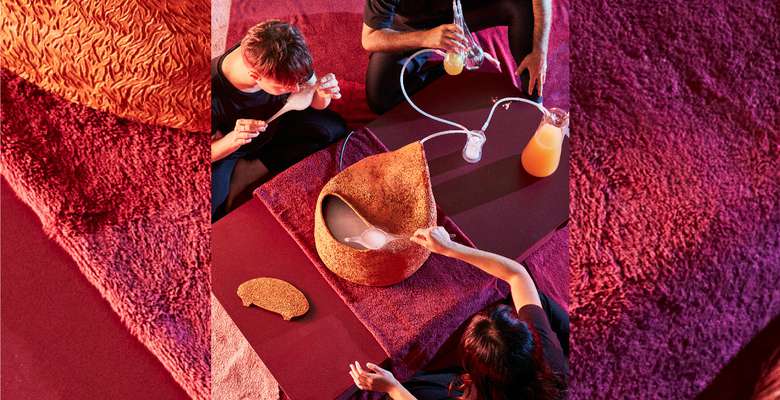
- Systemic changes
The Microbial Bathhouse is a research platform investigating the relationship between architecture and the Western conception of the body and health to open up conversations around the ways we practice medicine and healing in the West.
In spatializing new rituals around microbial health, it looks into the sauna/bathhouse typology as a point from which conventional medicine (a predominantly paternalistic, isolating, and depersonalizing endeavour) can shift from a practice of caring 'for' to a feminist practice of 'caring with'.
Through Co-healing sessions, it aims to investigate the body as a more-than-human space and collective resource for healthing. In workshops, I investigate how our current condition shapes a dangerous and exclusively antimicrobial citizenry, and how architecture can support the safe and somatic exchange of microbial matter by harnessing 'somatic phronesis', our embodied knowledges built from our sociocultural experiences of health.
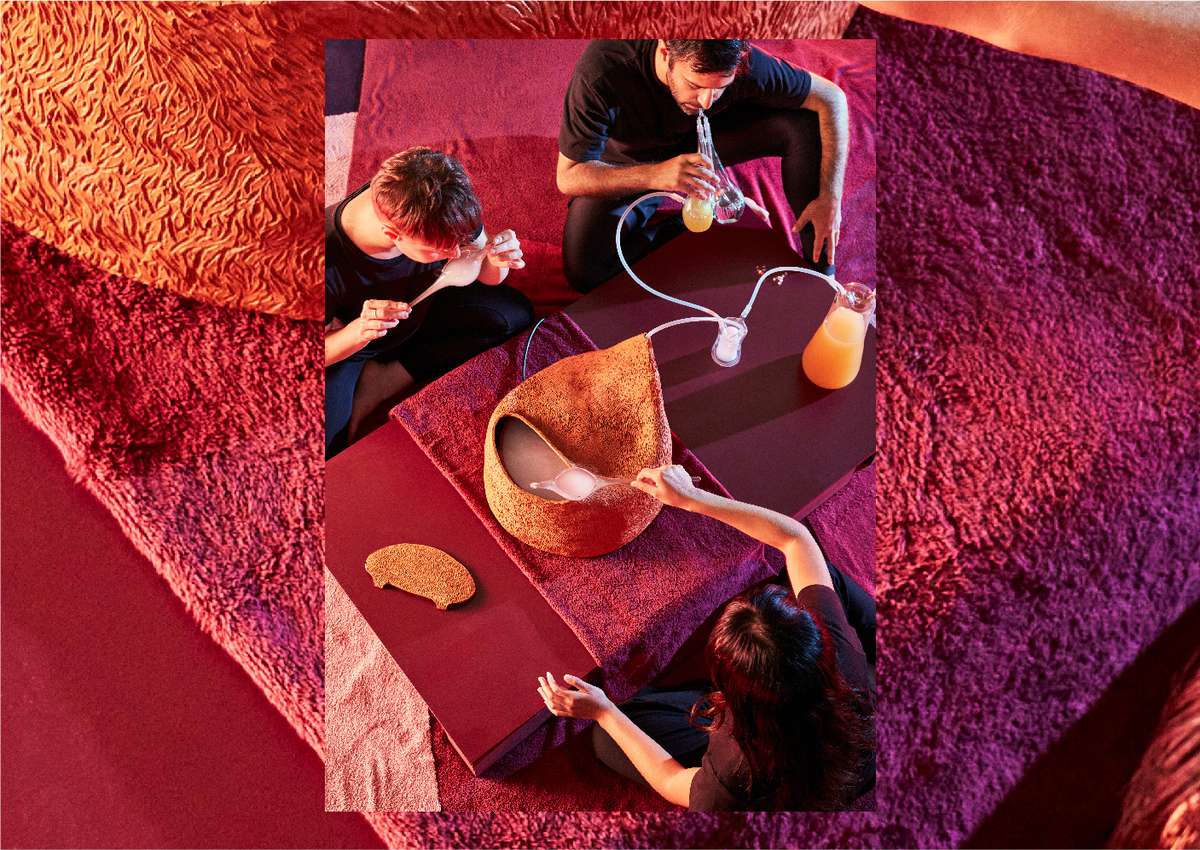
Designed with the needs of microbes in mind, the bathhouse is kept between 35 and 37 Celsius and 60% relative humidity. This creates a favourable environment for microorganisms to travel outside co-healer’s bodies, and provides a soothing, sauna-like space for communalizing caring with others. Prior to entering the microbial bathhouse, co-healers receive a safety checklist to determine which ritual they may engage in.
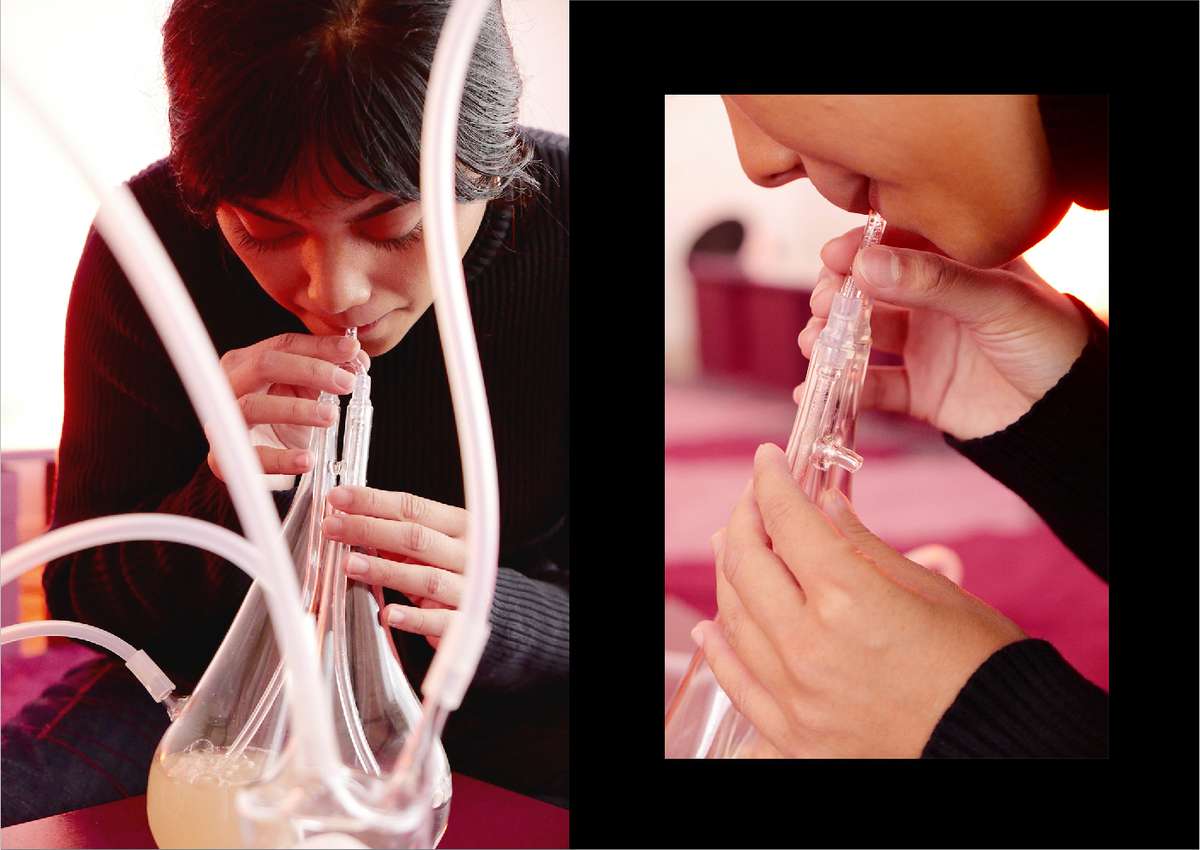
Microbes from the respiratory tract are collected during the Giving ritual. After multiple co-healers have contributed microbes, the microbial broth is transferred to an amplification jar for twenty-four hours. This gives time for the microorganisms to multiply significantly.
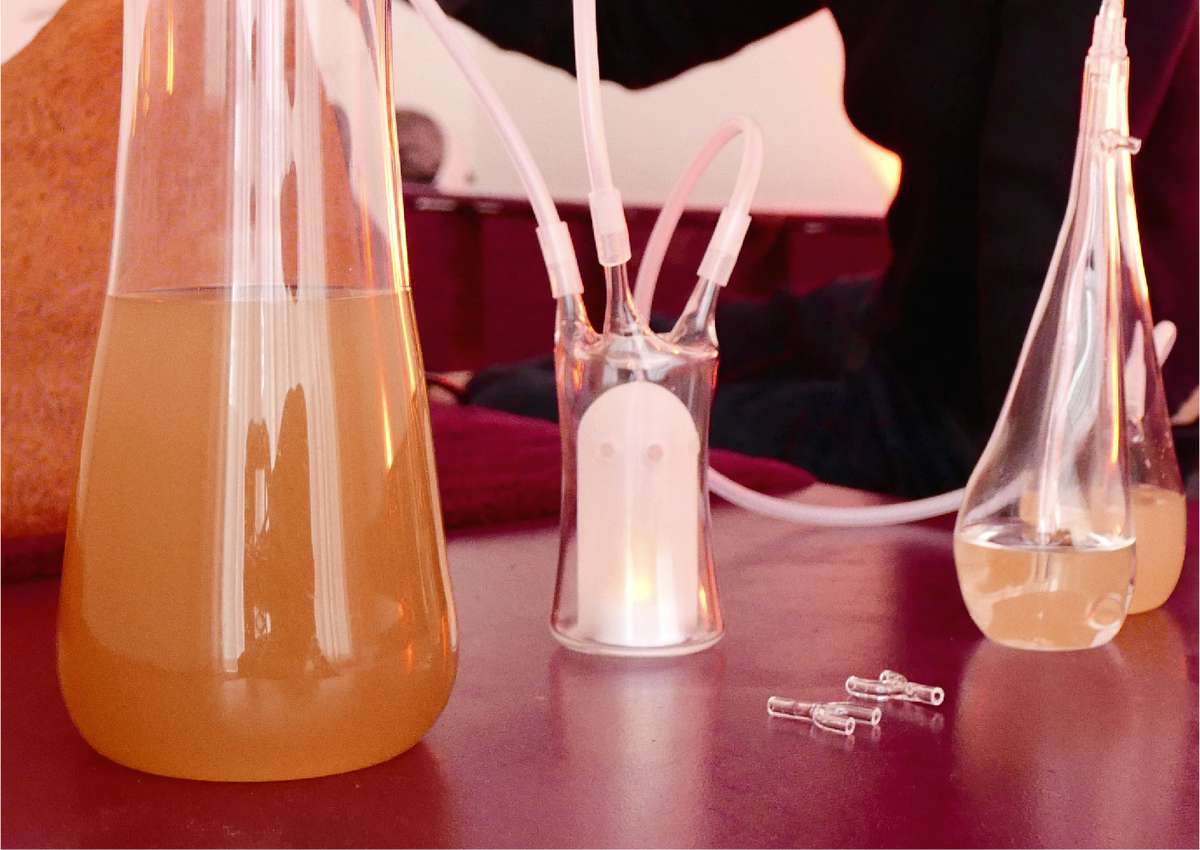
To keep microbes alive once they exit the lungs, the various vessels are connected to a glass vessel containing a candle, reducing the oxygen level to suit microorganisms which prefer lower levels of oxygen to survive.
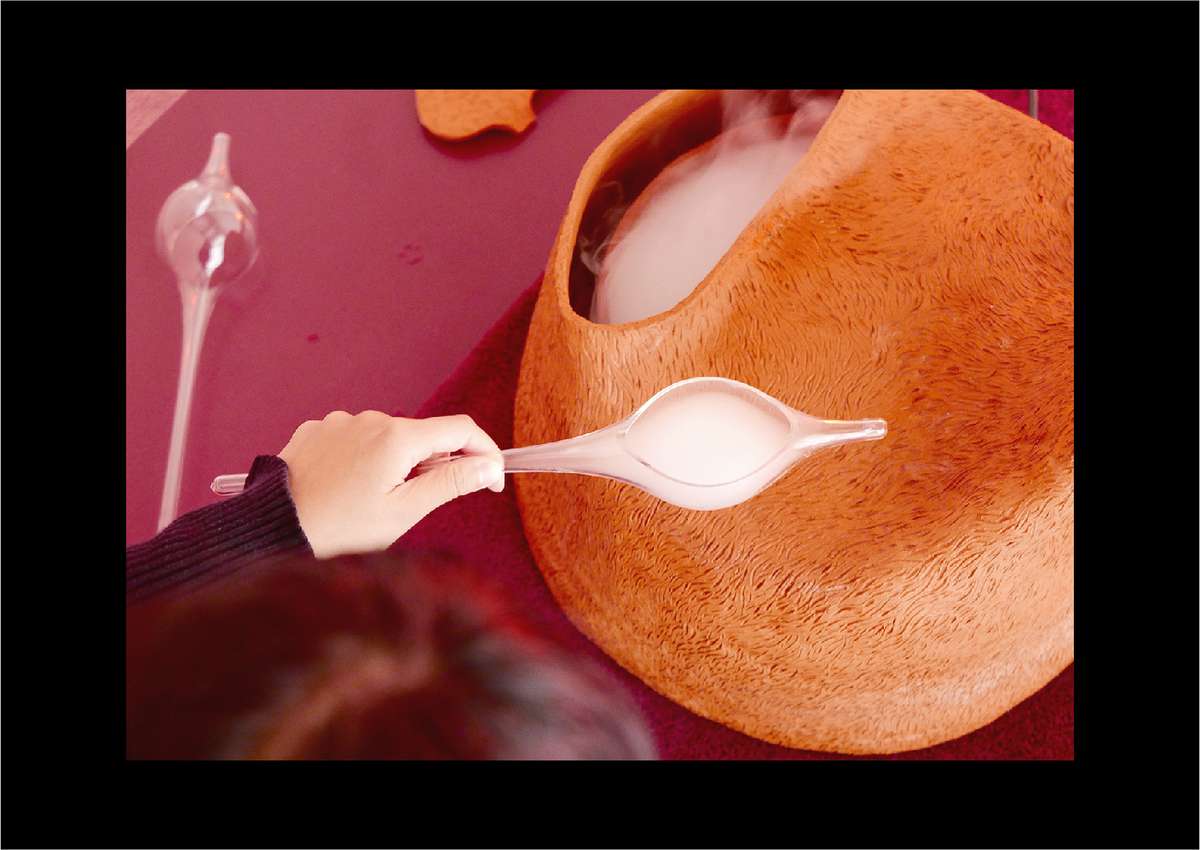
The microbial liquid is transferred into a ceramic vessel and then transformed into a fine particulate that can be inhaled. During the Receiving ritual, co-healers scoop up the microbial steam with a special spoon that is designed to hold mist.
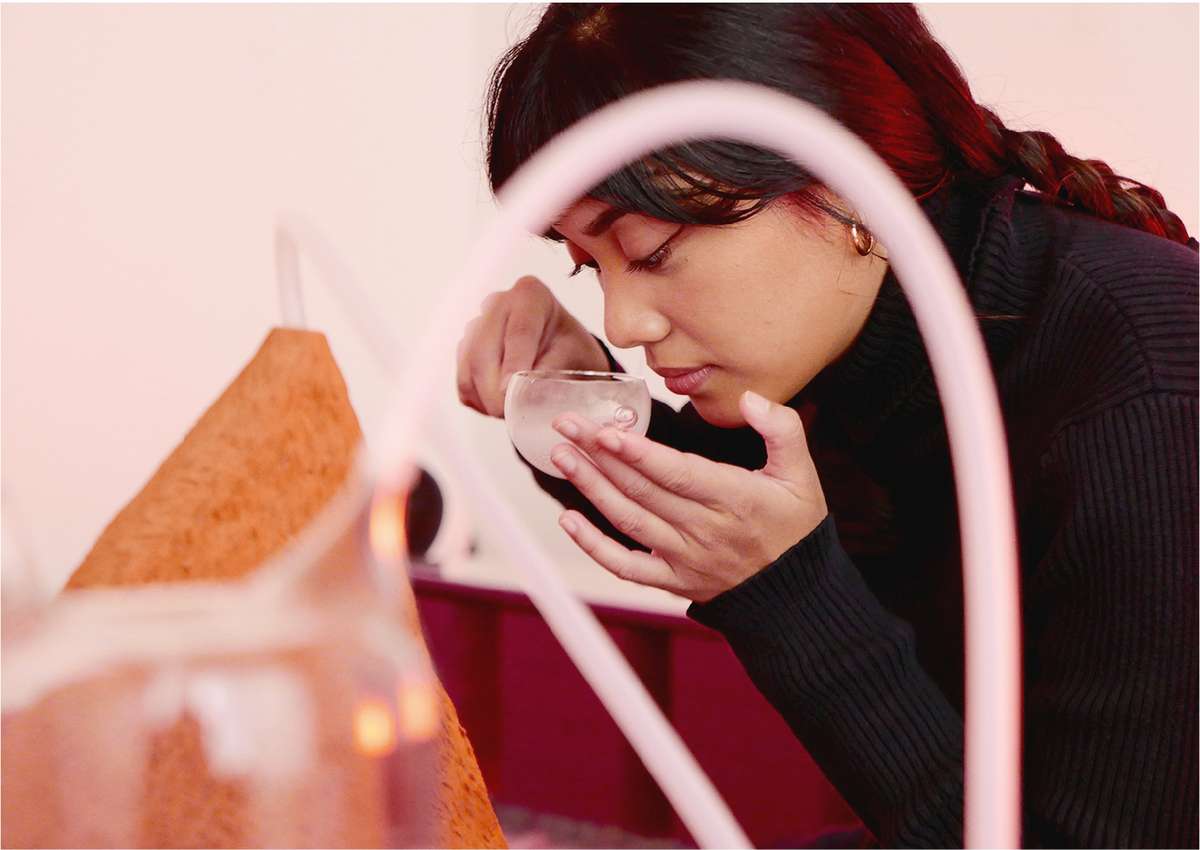
Co-healers inhale tiny droplets of mist, helping the rich and diverse collection of microbes to travel into the respiratory tract. This process, of transplanting a collection of different lung microbiota, aims to help diversify the microbiota of people as a preventative health measure, but also to help those who suffer from different chronic respiratory diseases such as asthma.
The Microbial Bathhouse
The Microbial Bathhouse

- Systemic changes
The Microbial Bathhouse is a research platform investigating the relationship between architecture and the Western conception of the body and health to open up conversations around the ways we practice medicine and healing in the West.
In spatializing new rituals around microbial health, it looks into the sauna/bathhouse typology as a point from which conventional medicine (a predominantly paternalistic, isolating, and depersonalizing endeavour) can shift from a practice of caring 'for' to a feminist practice of 'caring with'.
Through Co-healing sessions, it aims to investigate the body as a more-than-human space and collective resource for healthing. In workshops, I investigate how our current condition shapes a dangerous and exclusively antimicrobial citizenry, and how architecture can support the safe and somatic exchange of microbial matter by harnessing 'somatic phronesis', our embodied knowledges built from our sociocultural experiences of health.
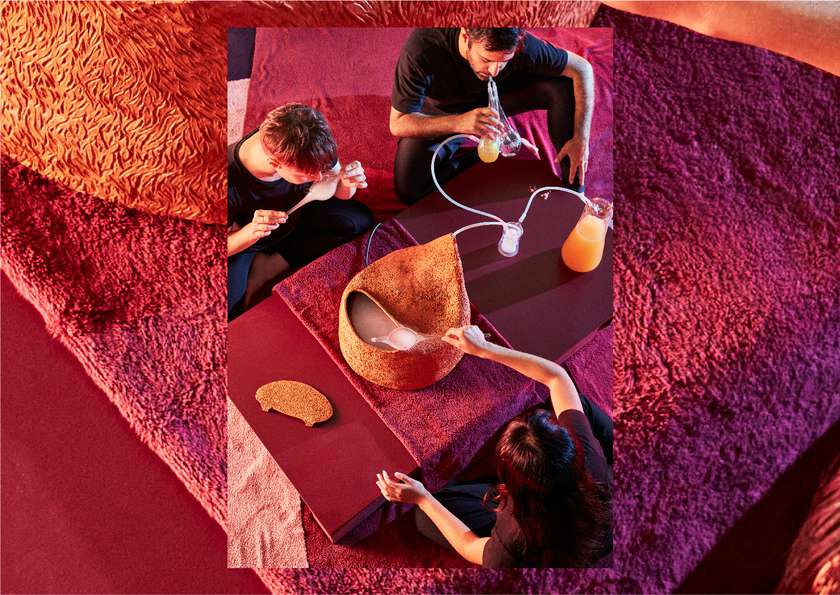
Designed with the needs of microbes in mind, the bathhouse is kept between 35 and 37 Celsius and 60% relative humidity. This creates a favourable environment for microorganisms to travel outside co-healer’s bodies, and provides a soothing, sauna-like space for communalizing caring with others. Prior to entering the microbial bathhouse, co-healers receive a safety checklist to determine which ritual they may engage in.
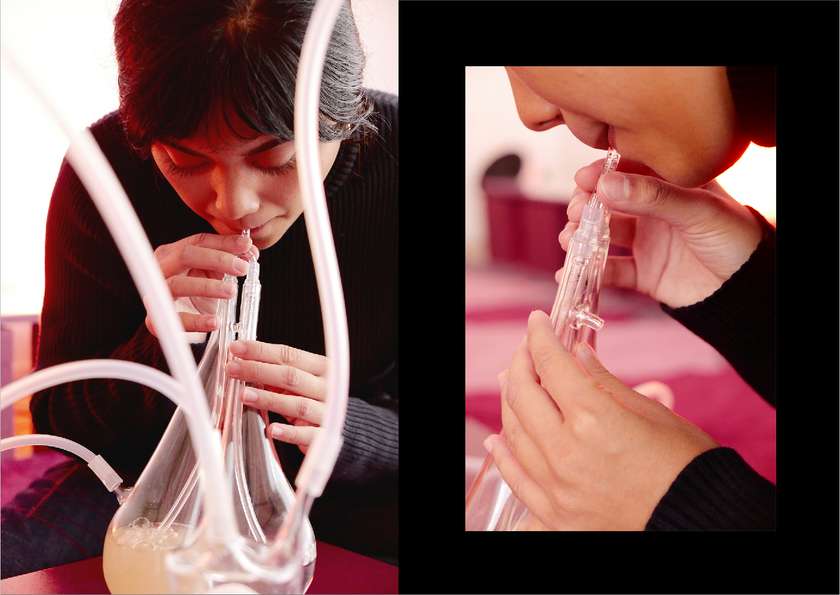
Microbes from the respiratory tract are collected during the Giving ritual. After multiple co-healers have contributed microbes, the microbial broth is transferred to an amplification jar for twenty-four hours. This gives time for the microorganisms to multiply significantly.
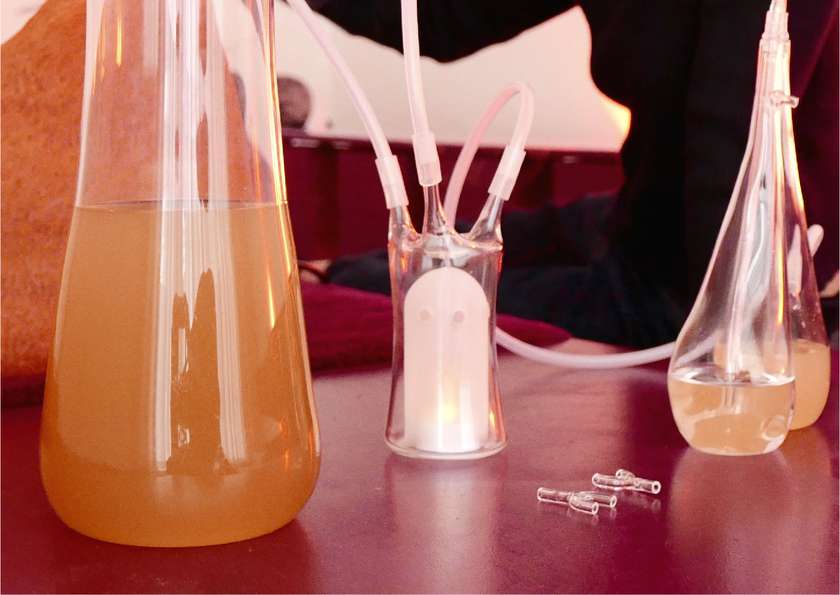
To keep microbes alive once they exit the lungs, the various vessels are connected to a glass vessel containing a candle, reducing the oxygen level to suit microorganisms which prefer lower levels of oxygen to survive.
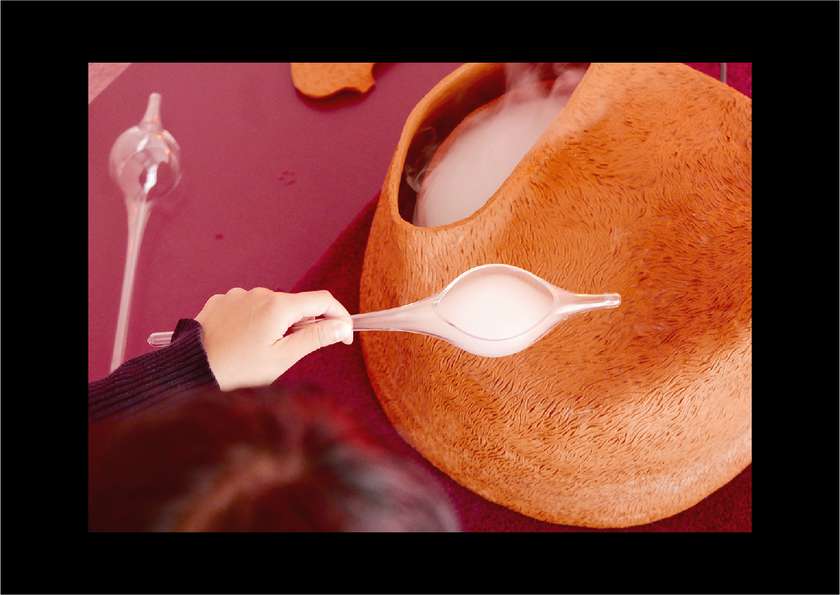
The microbial liquid is transferred into a ceramic vessel and then transformed into a fine particulate that can be inhaled. During the Receiving ritual, co-healers scoop up the microbial steam with a special spoon that is designed to hold mist.
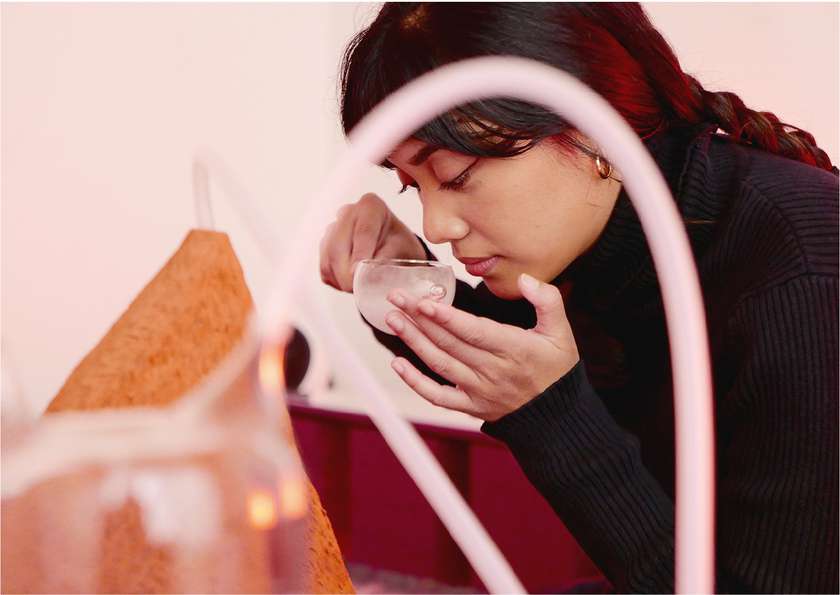
Co-healers inhale tiny droplets of mist, helping the rich and diverse collection of microbes to travel into the respiratory tract. This process, of transplanting a collection of different lung microbiota, aims to help diversify the microbiota of people as a preventative health measure, but also to help those who suffer from different chronic respiratory diseases such as asthma.